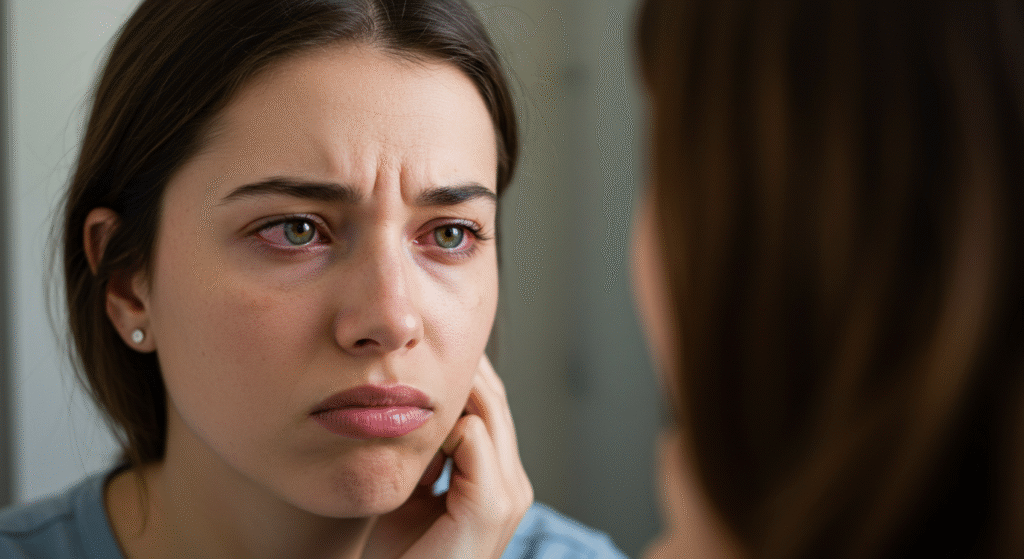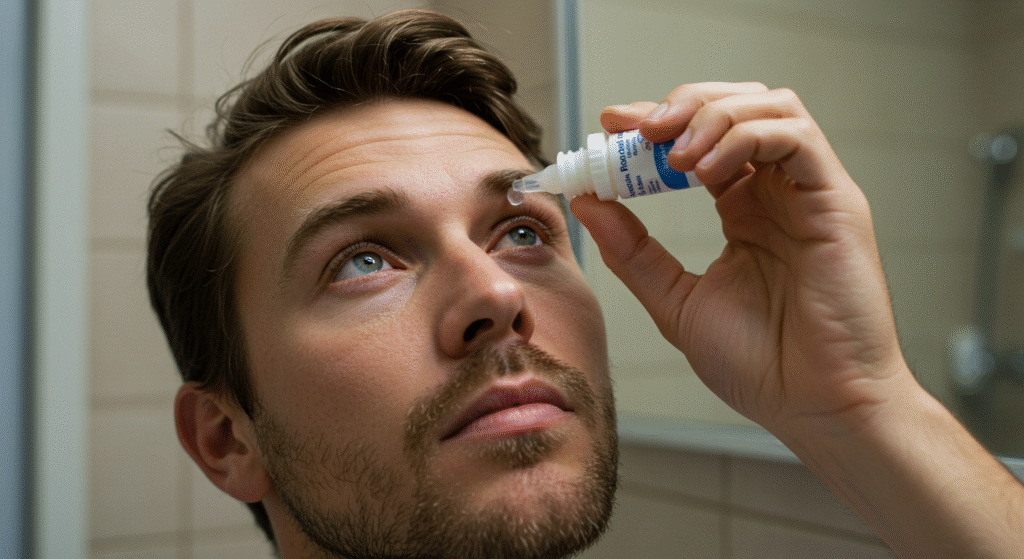
Pink eye, also known as conjunctivitis, is super common — and, honestly, kind of a nuisance. It usually shows up as red, itchy eyes with some gunky discharge that can literally glue your eyelids shut while you sleep. It might be caused by an infection, allergies, or even certain irritants like chlorine or makeup. The good news? Most cases go away on their own in a week or two. Depending on the cause, you might use a warm or cold compress, special eye drops, or antibiotics to feel better. But if things turn severe or just don’t improve, it’s time to check in with a doctor. Ever woken up with your eyes stuck shut and thought, “Well… this can’t be good”? That lovely combo of red, itchy, and goopy is usually a pretty strong hint that pink eye has entered the chat. One moment your eyes are fine, and the next they look like you had a long night rewatching an entire season of your favorite show. Pink eye — or conjunctivitis, if we’re being official — is basically a swelling or irritation of the thin membrane that lines your eyelid and covers the white part of your eye. Even though it looks kind of scary, most cases aren’t a huge deal. In this post, we’ll walk through what it feels like, how you might get it, and the best ways to treat it if it ever hits you.

Ever woken up with your eyes stuck shut and thought, “Well… this can’t be good”? That lovely combo of red, itchy, and goopy is usually a pretty strong hint that pink eye has entered the chat. One moment your eyes are fine, and the next they look like you had a long night rewatching an entire season of your favorite show.
Pink eye — or conjunctivitis, if we’re being official — is basically a swelling or irritation of the thin membrane that lines your eyelid and covers the white part of your eye. Even though it looks kind of scary, most cases aren’t a huge deal. In this post, we’ll walk through what it feels like, how you might get it, and the best ways to treat it if it ever hits you.
Symptoms
When pink eye shows up, it rarely sneaks in quietly. The telltale pink or red color is usually the first thing you notice — that’s because the tiny blood vessels in your eye’s surface swell up and become more visible. It can feel like there’s something perpetually stuck in your eye, like sand or dust that just won’t go away no matter how many times you blink.
Some people deal with eyes that won’t stop watering, while others experience a sticky, mucus-y discharge that can dry up and glue the eyelids together overnight. Not exactly a dream morning. Itching is another common symptom — like that maddening kind of itch that makes you want to rub your eyes nonstop, even though that only makes things worse.
And let’s not forget the sensitivity to light — even a regular sunny day can suddenly feel like stepping onto a movie set without your sunglasses. On top of all this, your vision might get a little fuzzy, mostly because of the buildup in your eyes.
Causes
Pink eye can show up for a bunch of different reasons — and it really doesn’t care who you are. One of the most common causes is an infection, and that can be either viral or bacterial. Viral conjunctivitis is notorious for spreading fast (kind of like a cold) and often comes with other annoying symptoms like a stuffy nose or sore throat. Bacterial pink eye usually brings along a thicker, more colorful discharge — the kind that people do not enjoy talking about.
But it’s not only germs that stir things up. Allergens like pollen, dust mites, and pet dander are also big-time triggers. That’s why some folks always seem to come down with pink eye during allergy season. Contact lenses can be an issue too, especially when they’re overworn or not cleaned well. I’ve even heard of cases triggered by makeup or harsh pool chemicals — anything that irritates the eye can cause inflammation.
And yes, it spreads easily. Unfortunately. Sharing towels, touching your eyes with dirty hands, or just being around someone who’s sneezing or coughing near you — any of that can do it. That’s one of the reasons why pink eye loves schools and daycares — lots of close contact (and probably not enough handwashing).
Treatments
The silver lining? A lot of pink eye cases — especially the viral ones — tend to sort themselves out within a week or two. Still, that doesn’t mean you have to just suffer through it. Cold compresses can really dial down the irritation and swelling, while warm ones are great for loosening up that crusty mess your eyes make overnight.
If a bacterial infection is causing the problem, a doctor might give you antibiotic eye drops or ointments. I remember thinking antibiotics would fix any kind of pink eye, but turns out that’s not true — they don’t do anything for viral types, which is probably why your doctor might tell you to wait it out instead.
Allergic conjunctivitis is another story. That version usually responds well to antihistamine eye drops or typical allergy meds. I know people who swear by artificial tears for soothing their eyes and washing out whatever’s irritating them — especially during allergy season.

While you’re recovering, it’s best to give your eyes a break. That means no contacts or eye makeup, at least for a bit. And if you want to avoid spreading it or making it worse, wash your hands a lot, keep your hands off your face, and maybe change out your pillowcase every day for a little while.
Most of the time, pink eye is just a minor hiccup. But don’t ignore it if it starts getting worse. If you have strong pain, blurry vision that sticks around, or your symptoms just won’t go away, you’ll want to check in with your doctor — especially if your immune system’s already dealing with other stuff.
Pink eye conjunctivitis – Symptoms and causes – Mayo Clinic
Conjunctivitis Pink Eye – CDC
Pink Eye Conjunctivitis – Causes Symptoms & Treatment
Today’s related searches: how to treat pink eye at home, pink eye treatment options, natural remedies for conjunctivitis, warm compress for pink eye, can pink eye go away on its own, how to prevent pink eye, antibiotic eye drops for bacterial conjunctivitis, artificial tears for pink eye relief, allergic conjunctivitis treatment, viral conjunctivitis self-care
Each offers exceptional value and is designed to support your health in meaningful ways





Wishing you a speedy recovery.